5 Reasons Why I Support the Canadian Seal Hunt
by Alexandra Suhner Isenberg, former Online Communications Director, Truth About FurTwo years ago I went to NAFFEM, a large fur trade show in Montreal. I was invited as a blogger, to…
Read More

Two years ago I went to NAFFEM, a large fur trade show in Montreal. I was invited as a blogger, to…
Read More
Two years ago I went to NAFFEM, a large fur trade show in Montreal. I was invited as a blogger, to check out the beautiful pieces and choose some of my favourite items for sale at the show. I am a huge supporter of the Canadian fur industry (read about my reasons here) but I’ve been less vocal about the seal hunt, primarily because I didn’t have enough information to make an informed opinion about it. Well, now I do, and I would like to share it with you because I think it is important.
1. Seals are a sustainable resource and are in abundance. We live in a world where resources have become an issue, and many of us are choosing to consume products that come from renewable resources. Seal is a great example of this – there are tons of them in Canada and they are not at all at threat of becoming endangered.
Speaking of sustainability, seals are part of the reason why fish stocks are very low (although overfishing is also a big issue) and the seal hunt not only provides jobs and resources for the hunters, but also allows the fish populations to regenerate (a bit.) All major conservation groups will agree that a responsible use of resources (like hunting seals for food and clothing) is a good thing, and is often the central principle of modern conservation.
2. Seals are local. The green topic is a big one right now, and part of the green movement focuses on buying local.
Canada has a lot of great resources, but when it comes to fashion, few are 100% Canadian. Nearly all of our fashion products are in some way sourced from overseas (whether it be raw materials or construction) but seal skin and wild fur are 100% free range, local products.
3. The seal hunt supports Canadian communities. There are two major seal hunts in Canada, one in the Arctic sea (seals hunted by Inuit people) and one on the East Coast (a commercial seal hunt.) Both provide jobs and resources for those people. The meat is eaten, the fat is used for a variety of products, and the skin is sold so that these people can support themselves.
Food, as you may know, is extremely expensive in the Arctic, and there are limited jobs in that area, or in the Maritimes. The seal hunt is a very important Canadian industry for the people who depend on it.
4. The seal hunt is not inhumane. The animal rights activists will have you believe that the seal hunt is inhumane, but this is not the case.
First of all, most seals are killed with rifles (not clubbed to death.)
Secondly, there have been numerous studies done on the seal hunt, and biologists and veterinarians have all agreed that the seal hunt is no less humane than any other hunt.
SEE ALSO: EU SEALING POLICY IS HYPOCRITICAL, UNDEMOCRATIC
5. The media paints an unfair picture. My question, after having learnt all the above, was why does the seal hunt have such a bad reputation? There are two answers to this.
First of all, seals are cute, and people are more likely to be protective of cute animals. If we were all truly concerned about cruelty and sustainability, why aren’t we doing more to save fish? Many species of fish are far more at risk than seals, yet their not-so-cute appearance doesn’t exactly inspire people to campaign for them. (Notice how we care more that our tuna is “dolphin safe” but not so much if that particular tuna is endangered.)
Secondly, the seal hunt is much more visible than other hunts, and the access to it allows for more imagery. The seal hunt happens in certain places at very specific times, and so it is very easy for activists to turn up and take photos of blood on the ice. Those same activists aren’t invited into abattoirs, and therefore we don’t have the same images in our head of cows or sheep. The fact that seals are cute, and that we have access to photos of them being killed, means the seal hunt has been very unfairly portrayed by the media and activist groups.
Many of us are so far removed from nature, farming, and hunting, and it is so easy to forget that our food comes from the land. While I will admit I don’t like seeing photos of any dead animals, I do appreciate the process and am under no illusions about the realities of eating meat and wearing animal products.
For those of us who do choose to consume animals, the best we can do is consume sustainable resources that are treated humanely – and the seal hunt is just that.
The World Trade Organisation (WTO) was formed on the principles of free trade and non-discrimination. However, its Dispute Settlement Body…
Read More
The World Trade Organisation (WTO) was formed on the principles of free trade and non-discrimination. However, its Dispute Settlement Body recently announced that it is supporting the EU's ban on the commercial trade in seal products, a ban that was set up on the grounds that the legislation served the 'public moral concerns' of a select segment of the EU population.
But what is 'public morality', really? The WTO itself doesn't have a definition. The General Agreements on Tariffs & Trade (GATT) does, but only that it allows each country to set its own definition.
This is opening a huge can of worms. It could allow a deluge of restrictive trade measures being justified on the grounds of 'public morals'. For example, a WTO member could block the import of pharmaceuticals based on a 'moral' objection to reliance on animals in medical research. No scientific support or data - just the belief it's immoral.
Similarly, governments could impose restrictions on the importation of animal products based solely on 'moral' concerns related to the animal husbandry practices employed in a particular country. No incentive to improve its animal welfare standards or attempt to correct long-held misapprehensions.
SEE ALSO: EU SEALING POLICY IS HYPOCRITICAL, ANTI-DEMOCRATIC
To take an example close to home - people still believe the fur industry skins animals alive for their pelts. Why would workers do something so unnecessarily cruel and make their own jobs that much harder? They don't, but many still think they do.
And why would WTO member states bother to negotiate complex trade disputes if they can just assert a moral objection and ban it? A decade ago, the EU, Russia and Canada addressed ethical concerns over fur trapping and that led to some of the most stringent animal welfare standards in the world - ones that apply to this day.
That would never have happened if they'd just said it was 'morally wrong' and slammed the door on any further discussion.
It's actually a matter of freedom of choice - something we take as a right, but that this decision has damaged massively. If someone doesn't want to wear fur, or eat beef, they have every right to do so. The same applies if they do.
SEE ALSO: PUBLIC MORALS AND TRADE BANS: WTO CAVES
This crops up in the fur trade because animals are involved, and that makes it emotional and divisive. Using 'public morals' to ban an animal product doesn't address the underlying issue of animal welfare or species conservation, as animals will continue to be hunted and farmed in the banned country and virtually every other country as well.
Instead, surely the responsible way forward is to promote welfare standards that create an incentive. This became abundantly clear after my recent trip to Sweden and Ireland, where hundreds of thousands of fur-bearing animals are trapped and killed - and virtually all are discarded. Why? For conservation and animal management.
This applies to the red fox in Switzerland, the 200,000-300,000 muskrats trapped in the Netherlands every year and millions of animals trapped throughout Europe, virtually all of which are discarded. Many consider that to be immoral.
So in essence, the anti-fur campaigns have stunted improvements in animal welfare and conservation practices and denied millions of Euros to rural people. But easy images of traps and "poor, innocent animals" are all we ever see. If these are the effects of public morality in action, we are indeed on a slippery slope.
To be honest, my own personal experience tells me it can be an easy mistake to make. As a former member of parliament I suspect I was at times guilty of thinking I had the right to set a moral agenda when I passed laws. All too often our politicians get too involved - lecturing the public on what's right or wrong - or worse still making sweeping judgements perhaps based on a few hundred protest cards or e mails rather than thinking about the silent majority.
With hindsight, I recognise that we are in dangerous territory when a politician or a government seeks to try and form a range of moral standards or assumptions. Making laws based on morality troubles me. Laws based on a set of basic human rights' principles or scientific evidence is a better measure than a politician's rather flimsy interpretation of what he or she thinks the moral values of the electorate might be.
This article was originally published in The Huffington Post - United Kingdom. View it here: Public Morals are a Slippery Slope
Public morals and their protection are certainly a concern for governments, but is the EU abusing its authority in using…
Read More
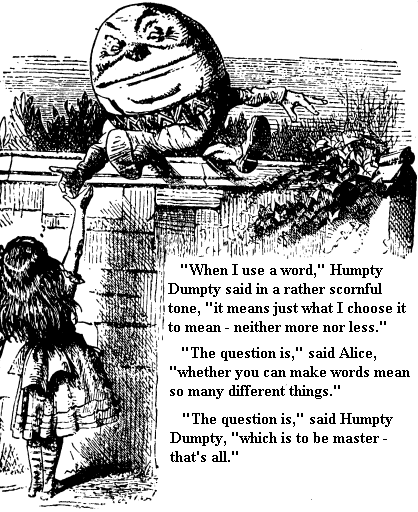
Public morals and their protection are certainly a concern for governments, but is the EU abusing its authority in using morality as an excuse to ban trade? The World Trade Organization thinks not, and that should worry all of us.
On May 22nd, the WTO Appellate Body released a long-awaited decision about the EU ban on importation of seal products "to protect public morals". While activist groups were quick to trumpet victory, it will take some time to understand the full impact of this complex 250-page judgment.
Nonetheless, it is clear that this ruling will have far-reaching implications for anyone involved with animal production or trading in animal-based products.
On the positive side, the ban (implemented in 2010) was condemned by the WTO’s highest authority for “arbitrary and unjustifiable discrimination” against products of other countries, and the EU was instructed to amend its legislation accordingly.
The main issue here is an exemption for Inuit hunters. The WTO noted that “virtually all” Greenlandic (i.e., EU) seal products benefitted from this indigenous exemption while the “vast majority” of Canadian seal products did not.
It therefore found that the ban was discriminatory against Canada. In reality, the exemption did little for Inuit hunters anywhere, because the ban (and related campaigning) eroded markets for all seals. (1)
The real goal of the exemption was to provide cover for activists and EU politicians, since concern for indigenous rights is almost as politically correct as animal rights among the chattering classes, in theory at least.
The WTO, to its credit, saw through the ruse and denied that such racially or culturally defined exemptions “can be reconciled with, or is related to, the policy objective of addressing EU public moral concerns regarding seal welfare”.
The EU was hoisted by its own petard. If the way in which seals are hunted is so morally repugnant that a trade ban is justified, how can these same hunting methods be acceptable when employed by Inuit people? It will be interesting to see how the EU responds.
SEE ALSO: PUBLIC MORALS ARE A SLIPPERY SLOPE
Of much greater importance, however, is that the WTO accepted the EU’s claim that trade restrictions based on animal-welfare concerns can be justified“to protect public morals”.
Until now, the WTO has refused to tolerate any ban based on the “means of production”. And for good reason: Say goodbye to world trade if countries can ban each other’s products because they don’t agree with their worker-safety regulations, environmental-protection controls – or now, animal-welfare concerns. (2)
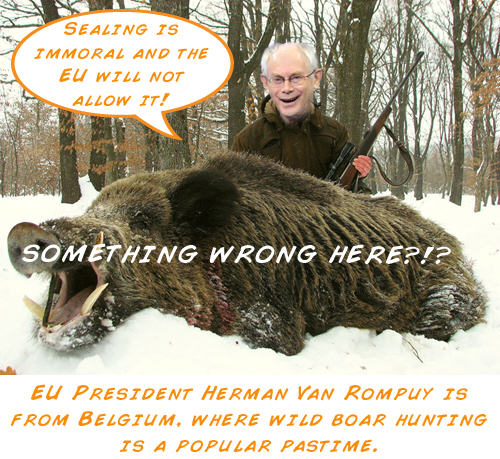
No wonder that animal activist groups are cheering: a brave new world of political campaigning has just opened for them!
"This is a very exciting development,” gushed Sheryl Fink, director of Canadian wildlife campaigns for the International Fund for Animal Welfare (IFAW). “Hopefully it will have positive repercussions for other animals that are affected by trade as well." (3) Fur trappers and cattle ranchers take note!
But whose “morality” is really being protected here?
The EU had argued that “because of the way in which seals are killed, the EU public regards seal products from commercial hunts as morally objectionable and is repelled by their availability in the EU market.”
To justify this claim, activists and EU politicians often cite an Ipsos MORI public opinion survey commissioned by Humane Society International (HSI) and IFAW. Conducted in 2011, in 11 countries, the study found that 72% of Europeans supported the import ban on seal products. (4)
The responses to another question in this study, however, are less often quoted. Europeans were asked “how much –if at all – would you say you personally know [about the seal hunt]”. The findings are astounding: 25% of Europeans admitted that they had “never heard of it”.
Another quarter (23%) said they had heard of the seal hunt, but knew “nothing at all”. And another 30% said they knew “not very much”.
In summary: 78% of Europeans say that they know little or nothing at all about the seal hunt. So much for the burning moral issue that justified putting the world trading system at risk!
But despite knowing nothing, 72% of Europeans support the import ban on seal products. That shows what 50 years (sic!) of activist campaigning can do. And it shows why anyone involved with animal production should now be very concerned.
* * *
(1) Inuit leaders have claimed from the start that the exemption for the products from Inuit hunting would not protect their people.
(2) European seal ruling reveals broader tensions over animal rights. By Brendan McGivern, The Globe and Mail, May 26, 2014.
(3) EU seal products ban upheld by WTO, Canada loses appeal. By Sue Bailey, The Canadian Press, May 22, 2014.
(4) Ipsos MORI: Majority of public support EU's ban on seal products
It’s no secret that fur was one of the hottest trends of the season with a presence in most major…
Read More
It's no secret that fur was one of the hottest trends of the season with a presence in most major runway shows. But fur is more than just fashionable, it is also one of the most sustainably-produced natural resources on the planet. Furs such as coyote, fox, beaver and muskrat have been used for centuries to provide warmth and incredible versatility. And when these furs are used responsibly, it's not just the fashion industry that thrives, our natural environment benefits too!
Nature, like most things, requires balance. This balance today includes the coexistence of humans and animals, and the modern fur trade plays a role in helping to maintain this relationship. Without regulated trapping and hunting to manage the size of wildlife populations, many ecosystems would be drastically affected. Regulated trapping is also often necessary to protect property and natural habitat, and to protect both humans and wildlife from disease. Let’s look at a couple of examples.
The historical fur trade that led to the foundation of many of our towns and cities was fueled, above all, by the beaver. After more than 400 years of commercial fur trading in North America, biologists tell us that beavers are as abundant as they were when Europeans first arrived here – thanks to modern trapping regulations. However, too many beaver can be as much a problem as too few beavers. Left unmanaged, beaver populations will keep increasing until they eat themselves out of house and home.
Once vegetation is destroyed, it will take many years before beavers can return to the region. With regulated trapping, beaver populations are maintained in balance with available habitat – they are more stable and healthier. Furthermore, overabundant beavers can flood homes, roads, fields and forest habitat. Much better that we use some of what nature provides!
One of the first furs to be used for clothing by First Nations people, beaver is still widely used today by some of the top designers. Specifically, on the runway this year, Givenchy has used beaver to create a sleek bomber jacket, Haider Ackermann showed a monochrome coat while Chloé featured a spectacular beaver vest.
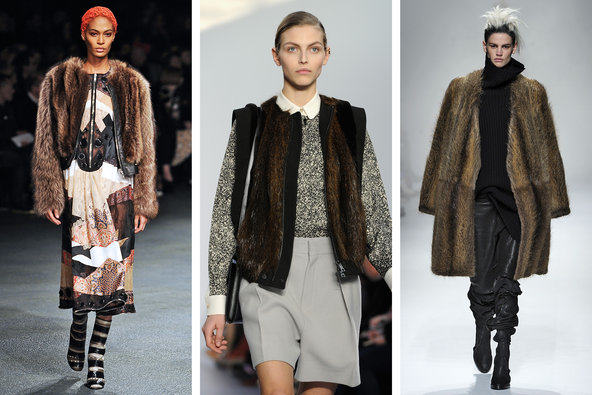
Coyotes are highly abundant across North America. They adapt well to human proximity and have profited from wolves being pushed out of much of their traditional range. Coyotes, however, can become dangerous when they are overpopulated and lose their fear of humans. In California, where I live, coyotes have been taking pet dogs and cats from backyards! They can also cause serious problems for cattle ranchers and sheep farmers when they prey on young calves and lambs. And overpopulated coyotes are more likely to spread diseases including rabies, tularemia, and hepatitis which can be transmitted to both animals and humans. Regulated trapping seasons help decrease the negative interactions between humans and wildlife – so why not make use of this remarkable natural resource?
Coyote fur, warm and dense, is great for making rugged men's jackets. It's beautiful, natural hue has also been popping up in women's accessories and shoes. And, of course, it is the favorite choice for trimming the hoods of down-filled parkas. (Fur trim on your parka hood protects your face from the cold winds of winter like nothing else!)
So here’s the real question: since wild furbearer populations are abundant and, in many cases, must be managed to maintain a balance with available habitat, should we kill these animals and throw them away? Or is it more respectful to use this beautiful natural material?
Activists in Europe and North America claim that it is “unethical” to use animals for fur. In this post I…
Read More
Activists in Europe and North America claim that it is “unethical” to use animals for fur. In this post I would like to explore this question of ethics, using farmed mink as an example.
Some would say that, from the perspective of the animal, it really doesn’t matter what it will be used for. What matters for the animal are the conditions in which it is raised and the way in which it is slaughtered.
Others insist that breeding animals for fur cannot be compared with raising them for meat, as the latter is a necessity and the former a superfluous luxury.
I think that both positions are oversimplifications. To stop with either of these arguments is a form of intellectual laziness or, more often, an easy way to win a debate against someone who has not thought very deeply about these issues.
To understand why I say this, try the following mind experiment: Would you agree to raise dogs (in the best of conditions, of course) for the sole purpose of killing their puppies (painlessly) soon after birth, because someone was ready to pay you to do so? Similarly, most of us would probably be shocked to learn that someone was buying art, just to destroy it. And here there would not even be any question of suffering.
These two examples show that the purpose of our actions does play a role in our determination of what is ethical.
I believe that a more honest way to think about the ethics of animal use is to consider the following two parameters or axes:
• the first (“x”) axis would indicate the welfare (or harm) caused by the way the animal is raised and killed;
• a second (“y”) axis would indicate the necessity or value of the resulting product or service.
Note: a third axis could plot environmental impact of the activity, but let’s leave that aside for now.
Some animal activists seem to agree with my idea. The Party for the Animals, in the Netherlands, for example, states in its guiding principles: “Any form of handling and use of animals should be justified by a careful weighing of the seriousness of the human interests involved on the one hand and the consequences for the animal on the other. The less necessary the human interest is and the more damaging the consequences for the animals are, the more this reduces the moral justification to harm the animals’ welfare.”
For those who remember their college philosophy classes, this is a typical “utilitarian” argument; the benefit must outweigh the costs.
When we plot mink farming on our two-axes model, the results will surprise most people.
On the welfare (“x”) axis, mink farming scores very well. Studies have repeatedly shown that mink are healthy and unstressed on mink farms; this is the only way to produce high-quality fur. The fact that mink are euthanized quickly and painlessly right in their barns is also an important welfare advantage, since transportation to distant abattoirs (to assure food safety) is recognized to be the most stressful part of the life-cycle for food animals.
But what about the “y” axis? Obviously mink fur is not a necessity. One might argue, however, that clothing is a necessity and that mink is a very durable type of clothing. As explained elsewhere in this website, fur is a natural, sustainable and long-lasting clothing material. A case can be made that a fur coat is one of the most environmentally friendly pieces of apparel you will ever own.
Furthermore, the “necessity” of meat – at least in the quantities that most of us consume -- is not as clear cut as we often assume.
About 95 % of Westerners use animal products on a daily basis. In my country, Belgium, the average person eats more than 1,800 animals in a lifetime (and that is without counting fish and shellfish, which would hugely increase the count.) The equivalent number for the USA is between 2,200 and 2,400 animals (again excluding seafood). Most of these animals are poultry, as chickens provides many less servings per life than a larger animal. By some estimates, chickens make up 90% to 95% of the animals we eat.
Many nutritionists now believe that the average person needs as little as 200 grams of meat per week to remain healthy. The average US citizen currently consumes between 10 and 15 times that amount. We are not saying here who is “right” or “wrong”. We are noting that there is a wide range of opinion on this question. But whatever the ideal consumption level might be to maintain health, it seems clear that we eat as much meat as we do because we like it. It is an emotional, cultural and personal choice, not a “necessity”.
Following this logic, it is clear that much of our current meat consumption could be considered to be just as “unnecessary” as mink fur.
More to the point, the concept of “necessary” and “unnecessary” goods or services appear to be culturally defined and therefore are subject to personal choices.
It is interesting to note that even philosopher Peter Singer, the father of the modern animal-rights movement, stated in his landmark book “Animal Liberation” that it is hypocritical to criticize the seal hunt or the fur trade while most people are eating meat every day.
It seems that animal activists have no real justification for their claims that it is “unethical” to wear fur.
“…Father believed that there was an animal even more dangerous than [humans], and one that was extremely common too: the…
Read More
“…Father believed that there was an animal even more dangerous than [humans], and one that was extremely common too: the redoubtable species Animalus anthropomorphicus, the animal as seen through human eyes. We’ve all met one, perhaps even owned one. It is an animal that is ‘cute’, ‘friendly’, ‘loving’, devoted’, ‘merry’, ‘understanding’….In [all these] cases, we look at an animal and see a mirror.” Life of Pi, Yann Martel.
Two recent news stories cast a revealing spotlight on our muddled thinking about animals.
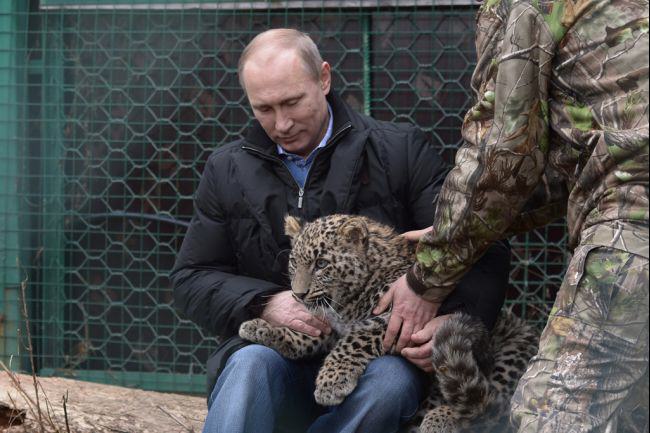
First, in Sochi, president Vladimir Putin was photographed caressing a young Persian leopard cub at a newly-constructed breeding and rehabilitation center.
“The restoration of this endangered species will be part of the heritage of these games; the natural environment is much improved thanks to the Olympics,” said Mr. Putin.
Take that, environmental activists with all your whining about the construction of Olympic installations in a pristine wilderness!
One local activist was just sent to prison for three years for painting protest graffiti on the wall of a construction site. But there’s nothing to soften a tough politician’s image like cuddling a baby animal…especially a “charismatic” leopard or other big cat.
Next stop, Denmark, where the Copenhagen Zoo sparked animal activist ire – and an international media feeding frenzy – for euthanizing an 18-month-old giraffe named Marius.
As part of the European breeding program, the zoo must maintain genetic diversity in its limited space, so Marius was redundant.
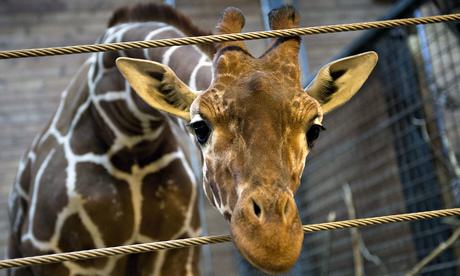
The European Association of Zoos and Aquaria (EAZA) fully supported the Copenhagen Zoo’s decision. But many were horrified when Marius was lured to lower his graceful 2-meter-long neck with a piece of rye bread – his favorite snack – and then shot through the brain with a captive-bolt pistol.
Even more shocking to many was the zoo’s decision to chop dead Marius into large pieces in front of visiting children and their parents, before feeding him to the lions.
Bengt Holst, scientific director of the Copenhagen Zoo was admirably calm and intelligent as he cut through the media sensationalism with plain talk.
“I know the giraffe is a nice-looking animal, but I don’t think there would be such outrage if it had been an antelope, and I don’t think anyone would have lifted an eyebrow if it was a pig,” said Holst.
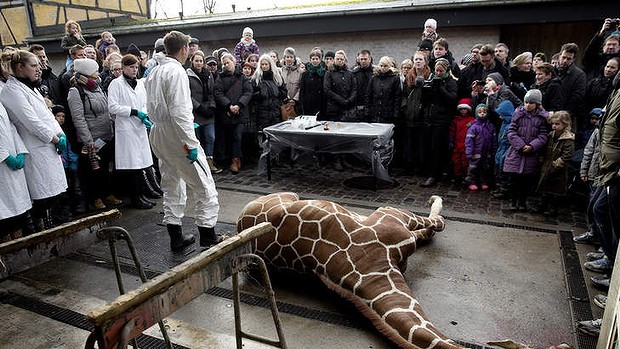
“There are 600 deer culled every year in a nature park north of Copenhagen, and no one gets upset. Humans have changed nature and we have a responsibility to maintain a balance.
“Humans kill and eat more than 50 billion animals a year. We have killed 5 giraffes since EAZA’s record-keeping began in 1828. Inbreeding can increase a population’s susceptibility to disease and other chronic conditions that can threaten the future survival of species under our care,” he explained patiently.
Nor did the zoo make any apologies for cutting Marius apart in front of children.
“It is not cruel, it is natural. Carnivores eat meat. If it was not the giraffe, it would have been a cow – what is the difference?
“Nature is not Disneyland where animals are only born but never die. In nature, animals must also die. Lions eat giraffes in nature. Why ‘protect’ children from reality?
“These children had the opportunity to see the wonder of the giraffe: for example, the huge heart that is needed to pump blood two metres up to their brain. They learned something in a way they would never learn from a book,” said Holst.
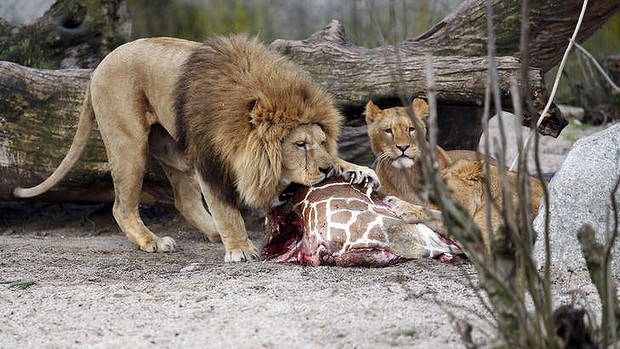
All very logical and scientific. But did he really like these animals, asked a journalist? “Of course I like these animals, that is why we are working so hard to protect their future. Sometimes you have to do things that are not so pleasant, but it is important to be intelligent about such things,” said Holst.
Not least interesting in this story, of course, is our own conflicting feelings about “charismatic animals”. Like it or not, Putin’s leopards (or, in this case, Danish lions) eat giraffes like Marius.
This reminds me of one of the most impressive scenes in the 2005 film The March of the Penguins when, after enduring incredible hardships, our heroes finally make it to the sea, only to be torn to bits by leopard seals.
For some reason, anti-seal-hunt activists never feature this footage on their protest websites?!
But let’s be honest: none of us are totally free of anthropomorphism. It takes a pretty cold-hearted person not to feel some sympathy for long-lashed, dewy-eyed Marius. Or for fluffy “baby” seals. Or for almost any animal staring wistfully into a camera lens. Especially when most of us now live in cities and rarely see a wild animal.
When overpopulated beavers flood our roads or raccoons move into our attics, however, it is remarkable how fast perceptions can change!
In their attempt to discredit the environmental credentials of the fur trade, activists often cite a “life cycle assessment” (LCA)…
Read More
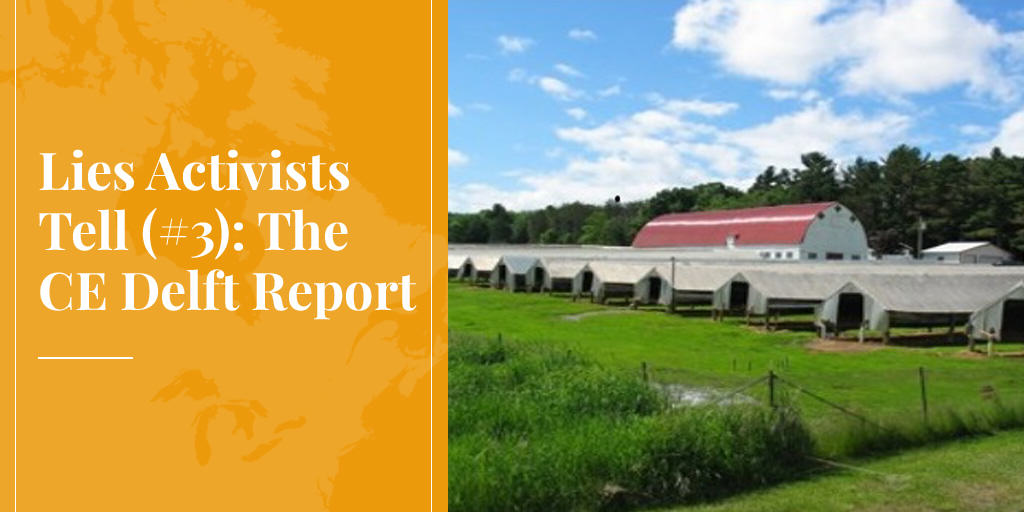
In their attempt to discredit the environmental credentials of the fur trade, activists often cite a “life cycle assessment" (LCA) produced by CE Delft, a Dutch research consultancy (see: NOTES, below). This study (The environmental impact of mink fur production, Delft, January 2011) found that: “Compared with textiles (including polyester, cotton, wool, and polyacrylic ‘fake furs’), fur has a higher impact on 17 of the 18 environmental themes, including climate change, eutrophication and toxic emissions.”
Because these claims, if true, would contradict our belief that fur is an environmentally responsible choice, we decided to take a closer look. It is lucky that we did!
Stated simply, we found that CE Delft’s negative assessment of fur results from several methodological assumptions or questionable statistics.
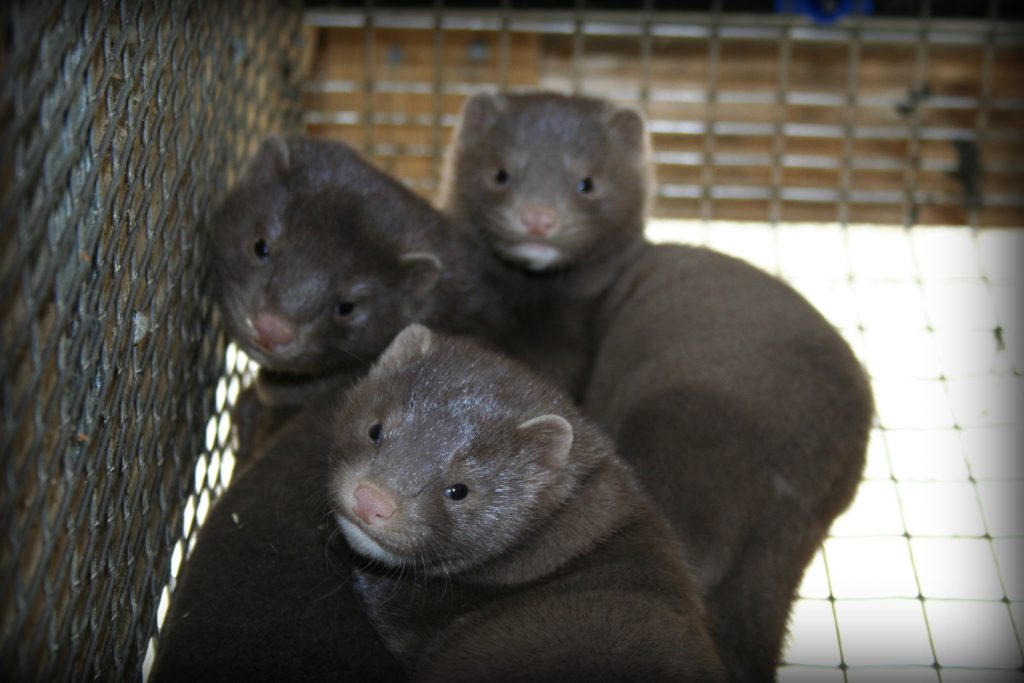
CE Delft used a significantly inflated figure (almost double our findings!) for the amount of feed required to produce farmed fur.
Let’s look at this CE Delft report in more detail ...
- CE Delft sets out to compare 1 kilogram (kg) of mink fur with 1 kilogram of fake fur and other textiles. To this end, they propose that 11.4 mink pelts are needed to produce 1 kg of fur, and that each animal consumes close to 50 kg of feed (including a share for the mother). From these assumptions, CE Delft concludes that 563 kilograms of feed are required to produce one kilogram of fur (49.4 kg of feed x 11.4 pelts/kg of fur.), and this is the figure on which they base all their subsequent calculations of environmental impacts. [p.6]
- Our own survey of North American and European farmers – including statistics published by the Danish Faculty of Agricultural Science, Aarhus University (2010) -- suggests that it actually requires from 38-45 kg – or an average of about 41.5 kg of feed to produce a mink pelt. CE Delft’s figure for how many pelts are required to supply a kilogram of fur is also higher than what we found -- perhaps because their calculation was apparently based on two sample pelts provided by the Dutch activist group Bont voor Dieren, which may not represent a true average size? Using the same methodology as CE Delft but with a large data set provided by European fur auctions, we find that 1 kg of fur represents about 7.75 pelts – not 11.4, as CE Delft proposes. If an average of 41.5 kg of feed is required to produce one mink pelt, multiplying this by 7.75 pelts indicates that 322 kg of feed would be required to produce 1 kg of fur – i.e., a little more than half (57%) the amount of feed used by CE Delft in their calculations. This discrepancy alone explains much of the higher environmental impact they attribute to real fur.
- CE Delft also assumes that mink food is comprised of 70% chicken waste and 30% fish offal. But feed composition varies according to local availability. Thus, in Denmark (which produces three times more mink than Holland, where CE Delft is based) feed is more commonly composed of 80% fish offal and 20% chicken waste. But the environmental cost of fish offal is much lower than that of chicken wastes. In fact, in a 2013 follow-up study, CE Delft acknowledged that a mink diet based on fish rather than chicken would lower environmental impacts by 30%. [See, #6, below.]
- Most important of all: other uses would have to be found for this meat and fish waste -- or it would go into landfills or be incinerated -- if mink weren’t eating it. It could therefore be argued that an environmental CREDIT should be applied to mink food production, since the environmental costs of disposing of these meat and fish wastes are avoided.
In summary: Since mink feed is the predominant factor in 14 of the 18 environmental impacts that CE Delft considered, their assumptions raise serious questions about the credibility of their findings.
4. The second major source of environmental impacts identified by CE Delft is emissions associated with mink manure and other farm wastes.
Here again, CE Delft ignored the subsequent use of this manure and the environmental CREDITS that could be associated with reducing the need for artificial fertilizers when mink manure and other wastes (soiled straw bedding) are properly managed and applied to local agricultural lands. Mink carcasses and wastes are now also used to produce biofuels, thereby reducing the need for fossil fuels.
5. Finally, the way in which CE Delft framed the scope of its study has skewed its findings:
CE Delft did not do a complete, “cradle-to-grave” Life Cycle Assessment in its 2011 study. Instead, it did a partial (“cradle-to-gate”) analysis which included the environmental costs of raising of the mink on the farm, pelting, transportation, auction sale, and processing (dressing) – but stopped at the point when the fur would be made into a garment. CE Delft therefore completely ignored one of the most important environmental attributes of fur apparel, i.e., that it is much longer-lasting than most other clothing materials. Clearly, it matters whether the environmental costs of production are amortized over 5-10 years (fake fur coats) or 40, 50 or more years (real fur coats)!
6. To address this blatant methodological flaw, CE Delft published a follow-up study in June 2013 (“Natural mink fur and faux fur products, an environmental comparison”). This study completed the “life cycle” by assessing the manufacture, use/maintenance and ultimate disposal of real and fake (polyacrylic) furs – but again concluded that real fur apparel has a greater environmental cost than fakes. Here’s why:
- The new study used the same assumptions and calculations about mink feed production and manure/waste management that were presented in the first study – and these two elements still accounted for most of the environmental impacts.
- Furthermore, to blur the environmental advantages of fur apparel lasting much longer than fakes, CE Delft proposed several “scenarios”. It acknowledges that real fur may last as much as five times longer than fake, e.g., 30 years vs 6, as proposed in an LCA prepared for the International Fur Federation [DSS, 2011). But then it backtracks, suggesting that “it is conceivable that the lifespan is determined by the change in fashion; in this case the lifespan of a natural fur coat and a faux fur coat could be equal.” (p.5) This statement reveals ignorance or deviousness:it doesn’t seem to know (or doesn’t want its readers to know?) that fur apparel can be taken apart and completely reassembled (“remodeled”) as fashions change. This is one of fur’s important environmental attributes; no one throws away a fur coat because styles change. In fact, with the current revival of fur in fashion, retailers are busy remodeling coats their customers bought during the last fur boom, in the 1970s and 1980s, i.e. coats that are already 30–40 years old!
- CE Delft also claims that the longevity of real fur coats may be off-set by the environmental costs of cold storage during the off-season. They suggest that 30 years of seasonal cold storage would have more impact on climate change, for example, than the entire process of raising the mink, processing the pelts and producing the coat! (Figure 7, p. 34.) The energy costs of fur storage as estimated by CE Delft, however, are considerably higher than figures collected from real fur storage facilities. More to the point, most fur coats are simply not kept in special cold-storage vaults, especially now that many homes are air-conditioned through the summer months. Furthermore, off-season storage of furs has always been less common in Europe than in North America, and is almost non-existent in Russia and the booming new markets of Asia.
- More fundamentally: we could question CE Delft’s core contention that real and fake fur coats can be compared at all. The fact that people are prepared to pay considerably more money for real fur coats than for fakes would seem to confirm that they have different qualities and “value”.
- Finally, we note that neither CE Delft study appears to have been submitted for peer review.
In conclusion, CE Delft’s often-quoted claim that “fur has a higher environmental cost than fakes” appears to be based on a series of questionable assumptions and calculations. CE Delft is cautious in how it presents its findings, especially in its 2013 study where it provides a number of different “scenarios” to account for the uncertainties it acknowledges. Activists, however, show no such caution when they cite these findings.
The biggest threat to climate change, in fact, may be activist “hot air”!
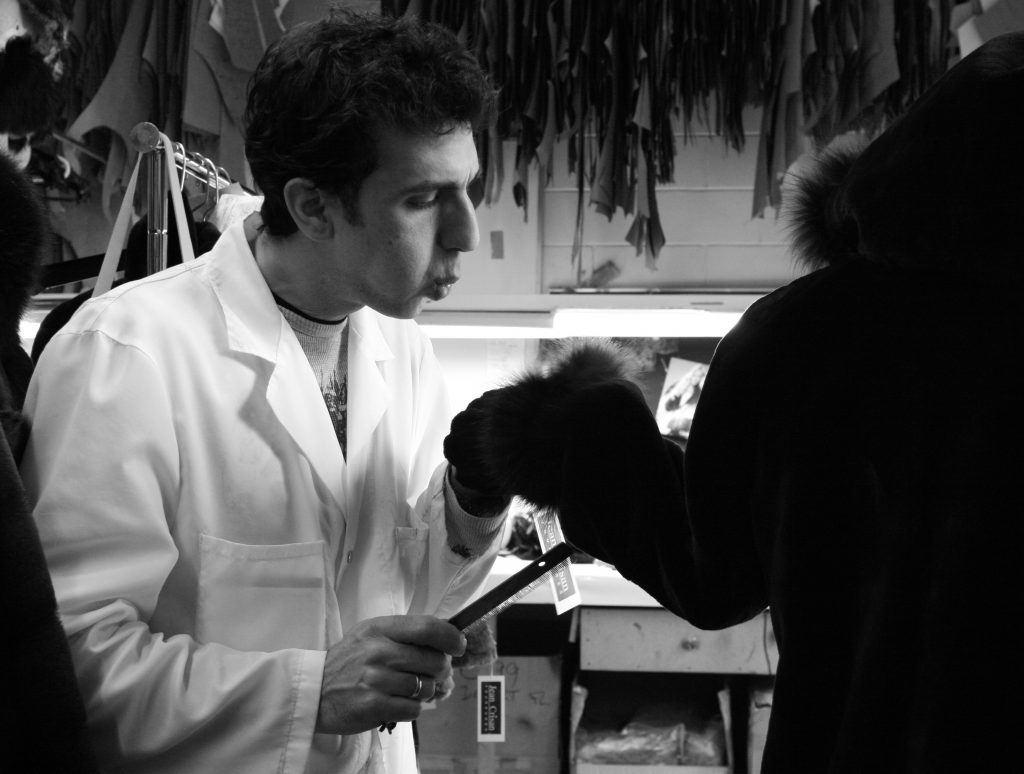
Related Reading:
NOTES:
Here are a few examples where the “CE Delft” study is cited in an attempt to discredit the environmental credentials of the fur trade:
1. “A study by consultancy firm CE Delft in 2011 found that the impact of fur production on 17 out of 18 environmental issues – such as climate change, ozone pollution and soil acidification – was found to be more harmful than when compared to common textiles.” From Cruel or cool? Worldwide sales of fur top £10 billion by Hayley Leaver, Metro.co.uk, 22 May 2013.
2. “PETA points to a 2011 study by a Netherlands consultancy firm CE Delft which compared the impact of fur production with common textiles on 18 different environmental issues such as climate change, ozone pollution, soil acidification and water and land use. ‘For 17 of the 18 issues, fur was found to be much more harmful than common textiles,’ says Ben Williamson, a spokesperson for PETA.” From Is the fur trade sustainable? By Tansy Hoskins, The Guardian, 29 October 2013.
3. “A 2011 study by Dutch independent researchers CE Delft calls fur production worse than textile production, in terms of environmental degradation. Carcinogens like chromium and formaldehyde, employed in dressing and dyeing processes, compromise fur’s biodegradability, not to mention ecological stability.” From Fur is Green. True or Faux? By Jody McCutcheon, Eluxe Magazine, 22 February 2013.
With fur now so prominent on the designer catwalks, in fashion magazines, and on the street, many publications are hosting…
Read More
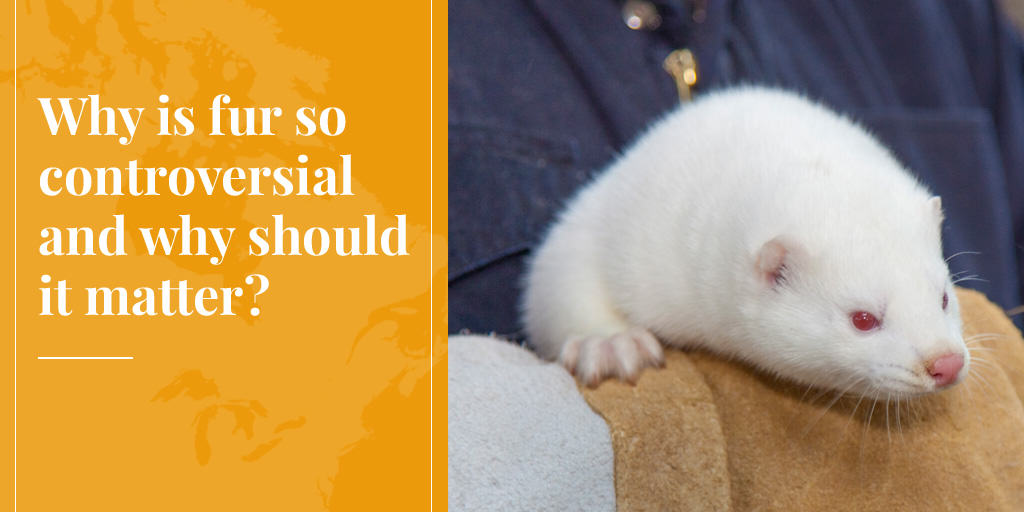
With fur now so prominent on the designer catwalks, in fashion magazines, and on the street, many publications are hosting debates about the ethics of wearing this noble but much-maligned material. Among all the arguments, for and against, one question is never asked: “Why is fur so controversial?”
True, animals are killed for fur. But more animals are killed for food every day in North America than are used for fur in a year!
But we don’t need fur, you say? Well, PETA and their friends argue that we don’t need to eat meat either.
The real reasons why fur is “controversial” may surprise you.
Let’s take a look ...
#1. The Fur Debate Is “Class War”: According to “animal-rights” philosophers, eating meat is no more justified than wearing fur. Even Peter Singer - whose book Animal Liberation launched the modern animal-rights movement – wrote that it is hypocritical to protest against the fur trade while most people eat animals daily. In practice, however, fur is an easy target because relatively few people wear it – and most of them are women. And fur apparel is expensive (because much of the work is done by hand) making it easy to dismiss as an “unnecessary luxury”.
Fur is a convenient cross-over issue for those who decry “capitalist exploitation" of both humans and animals. Thus, the “A” in “ALF” (Animal Liberation Front) is often circled – the graffiti code for “Anarchy” – and it is usually left-wing parties in Europe that endorse anti-fur positions.
The fact that those hurt by anti-fur campaigning are working people – aboriginal and other trappers, farm families, craftspeople – is something these “idealists” prefer to ignore. This is why PETA is so upset by the growing popularity of fur for small accessories or trim on parkas: this trend is making fur much more widely accessible, especially for young people.

#2. Fur as Scapegoat: We are bombarded with warnings that human activities are changing our climate, polluting the environment, destroying rainforests and driving record numbers of species into extinction.
These problems are complicated and solving them will require major changes in our lifestyles. So it may seem reasonable to claim that “if we care about nature, at least we should stop killing animals for frivolous products like fur!”
In fact, the trapping of wild furbearers is strictly regulated by state and provincial wildlife agencies to ensure that we use only a small part of the surplus nature produces each year. Endangered species are never used.
The modern fur trade is an excellent example of “the sustainable and responsible use of renewable natural resources”, a key ecological concept supported by all serious conservation authorities (International Union for Conservation of Nature, WWF, UNEP). Using renewable resources, like fur, is ecologically preferable to using synthetics derived from (non-renewable) petro-chemicals. And giving commercial value to wildlife provides a financial incentive to protect natural habitat, which is vital for the survival of wild species.
But why let facts get in the way of a good story?!
#3. “Media Sluts!” Speaking of stories, PETA co-founder and president Ingrid Newkirk explains its success in using the media to promote its issues (and brand!) as follows: “We’re media sluts ... we didn’t create the rules, we just learned how to play the game!”
PETA understands that media can’t resist running a photo feature about a starlet, supermodel or other "celebrity" – especially if they are female and undressed. So what if these women know nothing about conservation or wildlife biology, “the medium is the message”. Of course, getting on the evening news does not pay the bills. That’s where modern fund-raising technology comes in. (See #4)
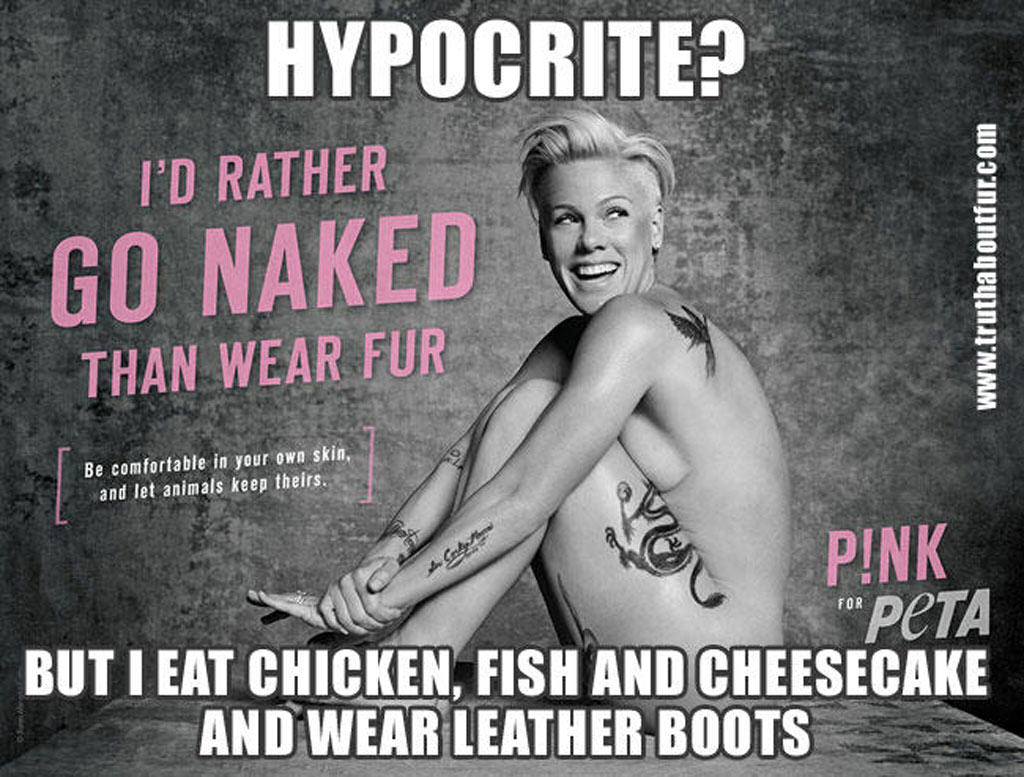
#4. Follow the Money! Many people don’t realize that campaigning against fur and other animal-based industries has become a very lucrative business. PETA and its affiliates rake in some $30 million annually; the so-called Humane Society of the United States (HSUS) collects more than $100 million. HSUS execs pull down six-figure salaries. And there are dozens of other groups.
Very little of this money goes to animal shelters; most is churned back into driving more “issues” and fund-raising campaigns.
PETA alone has more than 100 employees writing letters to editors and planning photo ops. The media stunts are quickly followed up with direct-mail, fund-raising appeals: “Please help us to stop this atrocious suffering!”
Computer technology allows this thriving new protest industry to target zip codes most likely to contribute. The money collected far exceeds what the fur trade – an artisanal industry comprised of thousands of small-scale, independent producers – can devote to telling their side of the story. So the activist message is most often heard – creating the impression that “there must be something wrong with the fur trade!”
As a leading animal activist once told me: “You can’t win because you have to spend money to fight us, but we make our money attacking you!”
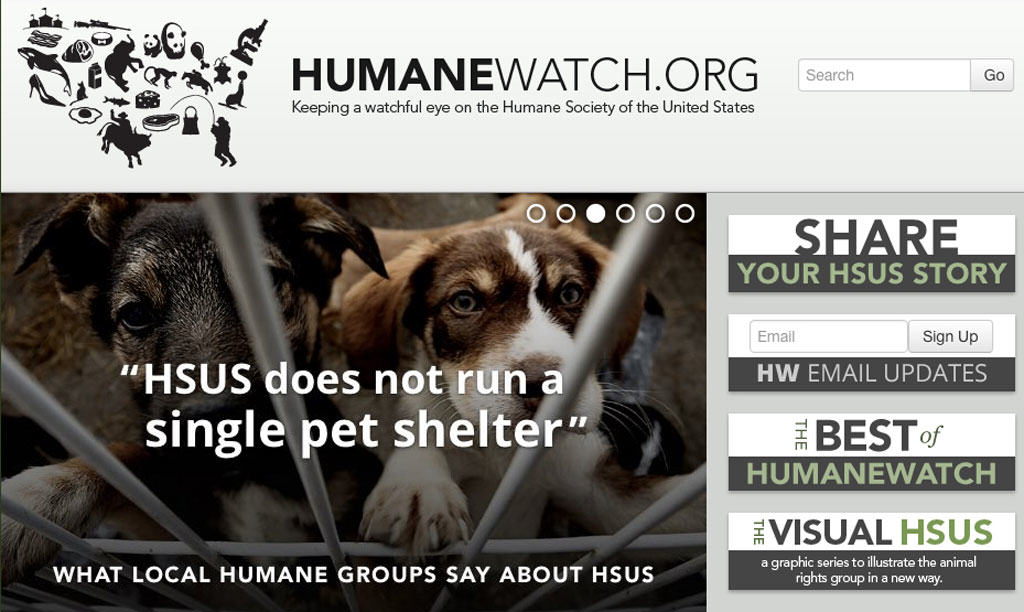
#5. Fur as Political Football: Lobbying to ban the production or sale of fur is emerging as a favorite activist tactic – especially because they don’t even have to win for it to work!
Political campaigns transform the parochial views of special interest groups into “hard news”. Well-informed journalists may resist providing free publicity for PETA’s street theater, but they cannot easily ignore a political campaign. And legislative bans carry a deeper message: if governments are prepared to shut down a tax-paying business, surely this must be a very evil industry indeed!
In fact, the real message of politics is ... politics.
Political attacks on the fur trade generally succeed only at the municipal level (an incestuous world where very few councillors make the decisions), or in countries with proportional representation. In these countries (including most of Europe), there are so many parties that complex coalitions are needed to cobble together a majority. Mink farmers (or seal hunters) wield limited economic clout – and fewer votes – making them ideal sacrificial lambs to bring left-wing or “green” partners into government coalitions.
Meanwhile, European governments now pay trappers to kill muskrats, (to protect dykes and farmland in Belgium and the Netherlands), or badgers (in Britain, to control bovine tuberculosis) – and destroy the furs. And while the EU banned the import of sealskins, fishermen there can shoot seals to protect their nets, without regulations or oversight, so long as they don’t sell the pelts!
Another revealing example is Israel, where a few members of the Knesset are hoping to ban all fur sales. Because there is almost no fur trade in Israel, it is very tempting for the government to yield to such pressures; there is no domestic downside. A fur ban in Israel would change almost nothing in that country, but activists hope to use it as a precedent for similar initiatives in Europe and North America – a rare example of “progressive” groups citing Israel as an ethical leader!
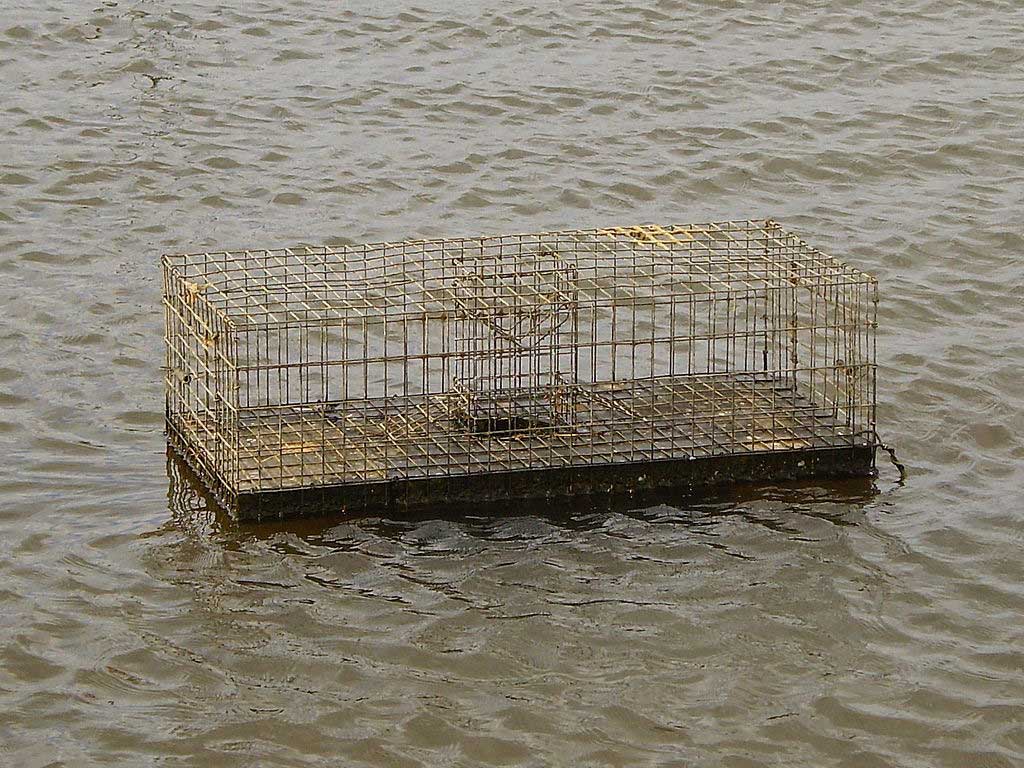
#6. Nature as Disneyland: Not so long ago, most North Americans still had family on the land. Summers might include visits with grandparents or other relatives on the farm – people who understood that nature is not Disneyland and animals are not talking cartoon characters.
Today, for the first time in human history, most of us live in cities. We have little direct contact with (living) animals that are not pets. We do not know that taking some animals each year may be the best way to keep the rest of the population stable and healthy. Or that wildlife must be controlled to protect property and habitat (e.g., from beaver flooding), to protect nesting birds and their eggs from predators (coyotes, foxes), to prevent the spread of dangerous diseases (e.g., rabies in raccoons, skunks), and for many other reasons.
When our meat comes in Styrofoam trays in the supermarket, we are easily shocked by images of animal slaughter for any purpose. Animal activists complain that industrial/urbanized society has lost respect for nature and animals – but, ironically, their campaigns attack the livelihoods and cultures of the few people who still live close to the land.
#7. Harassment of Women: We are rightfully disgusted when women are attacked in some countries for wearing their skirts too short or not covering their heads. Animal activists, however, have little to learn from religious extremists when it comes to harassing women.
Some notable anti-fur slogans have included: “It Takes 40 Dumb Animals to Make a Fur Coat, But Only One to Wear It!” and “Shame!”, an HSUS campaign showing a woman in fur hiding her face with her handbag. The goal is clearly to intimidate women, to make them feel uncomfortable wearing fur.
One wonders, would anti-fur campaigning have become so aggressive if men wore most of the fur coats? Perhaps PETA would show more moral conviction if they demonstrated against the use of leather by motorcycle gangs!

#8. Politically-Correct Bullies: “If you don’t remove fur from your store, we will picket every day before Christmas with a large-screen TV showing animals being skinned alive!”
When fur represents only a small proportion of their sales, fashion retailers cannot easily resist this sort of threat, even if fur is perfectly legal and their customers want to buy it. Those who persist may find their locks glued or windows broken. Or their homes may be splattered with red paint, their neighborhoods plastered with posters denouncing them as “murderers”. Security costs soon outweigh potential profits – or principles about freedom of choice.
When the mafia targets businesses in this way, it’s called a protection racket. When foreigners use threats of violence to make us do what they want, it’s called terrorism. But retailers targeted by animal activists are on their own; their tormenters are called “idealists”. And if the retailer decides to buy peace, their decision to drop fur is trumpeted by the bullies as a “moral victory” – and more proof that fur is “controversial”.
#9. Seeing Is Believing! Nothing has done more to fuel the fur “controversy” than a number of shocking videos posted on the web. These videos show animals in very bad condition on fur farms and even, in one particularly horrific example, an Asiatic raccoon being skinned while clearly still conscious, in a dusty village square somewhere in China.
Pictures are worth a thousand words and videos don’t lie ... or do they?
The injured animals shown in one “US fox farm” video were actually being kept for urine, to produce hunting lures. The farm never sold fur – fur from such poorly cared-for animals would have little or no value – and was later forced to clean up its act by the Illinois Department of Natural Resources. (The video mentions none of this.)
The Asiatic raccoon-skinning video is particularly upsetting, and especially dubious. No one would skin an animal alive. Morality aside, a conscious animal moves, increasing the risk of damaging the fur or cutting the operator. And with the heart still beating, an animal bleeds more, unnecessarily soiling the fur.
The only logical conclusion, shocking as this may be, is that someone paid a poor villager to do this terrible act for the camera.
When this video was first released by a Swiss animal rights group, in 2005, the International Fur Federation requested the full, uncut tape, with information about when and where it was filmed, so an investigation could be launched. There was no response – a strange reaction from a group supposedly concerned about animal welfare. Unless, of course, the real goal was to fuel controversy!
SEE ALSO: 5 REASONS WHY IT'S RIDICULOUS TO CLAIM ANIMALS ARE SKINNED ALIVE
#10. A Culture in Search of Values: Above all, the controversy sparked by fur reflects a confusion of values in our fast-changing society.
Wherever they were from, our grandparents lived in cultures with very clear ideas about what we should eat or wear, how we should speak or act. Urbanization, globalization, secularism and multi-culturalism have changed all that. It is no longer always clear what is right or wrong.
Without a social consensus, we live in constant doubt; sects flourish, politics become increasingly polarized, conspiracy theories abound. A simple trip to the grocery store becomes an existential experience: Should we eat meat? Is it better to buy organic or locally-produced food? What about low salt, high carbs, GMOs?
In this cloud of nutritional, ecological and ethical confusion, fur can become a flashpoint for the clash of urban and rural cultures, for troubling questions about our relationship with nature and animals, and, not least important, for the tension between collective values and individual freedom of choice.

Fur means different things in different cultures. Aboriginal people believed they could partake of animal power by wearing fur and that using these “gifts” showed respect for the animals that gave themselves so that humans might survive. (Much like many of us still say grace before meals.) Furs have also often conveyed status and power: furs adorn ceremonial robes and, in the Middle Ages, strict laws determined which furs might be worn by different classes. Ultra-Orthodox Jews wear fur-trimmed hats (streimels) on the Sabbath, to spiritually elevate both man and animal.
In the golden years of Hollywood, furs represented luxury and sensuality – as they still do for many. Today, animal activists would like to associate the wearing of fur with human arrogance and guilt, even as a new generation of designers rediscovers its natural beauty and makes fur more versatile and accessible than ever before. While some now denounce the fur trade as a crime against nature, others argue quite the contrary, i.e., that wearing and admiring fur can remind modern city dwellers that we are, ultimately, dependent on nature for our survival.
And this, perhaps, is the true nut of the fur debate: are humans “a rogue species”, “a cancer on the planet” that would be better eliminated, as some “deep ecologists” and the “voluntary human extinction movement” would have us believe? Or are we truly part of nature, a natural predator with as much right to be here as any other species (although with greater responsibilities, because of our unprecedented power and knowledge)?
Fur, in summary, has always been more than a beautiful, natural material. Fur has always had symbolic meaning, a powerful hold on the human imagination. The current “controversy” about fur is just the latest example of the on-going attraction of the most precious of natural clothing materials.

